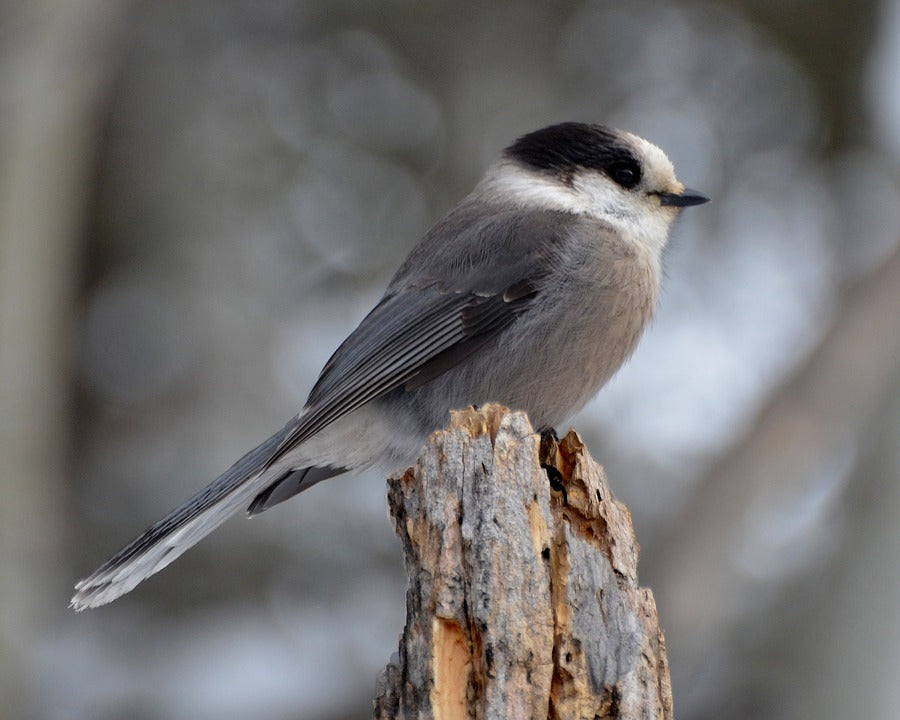Offer
Provide additional details about the offer you're running.
Provide additional details about the offer you're running.
Provide additional details about the offer you're running.

It was an easy choice for this month’s spotlight bird, the gray jay. As many of you regulars know, we break down a specific species each and every month and always do our best to choose a bird that matches correctly with the season or with any unusual movements or news surrounding said species.
To the surprise of many, Canadian Geographic officially crowned the gray jay – also known as the whiskey jack or Canada jay- as Canada’s National Bird. The 3 phase project kicked off in January of 2015, asking residents across the Great White North to vote on what they believed should be chosen as our country’s national avian symbol.
Last week at the Royal Canadian Geographical Society’s College of Fellows Annual Dinner, it was made official and the iconic Canadian publication will feature a complete story surrounding the gray jay in its upcoming December 2016 issue.
Where to Find the Gray Jay
When announced, many were surprised the gray jay was chosen over iconic birds such as the Canada goose or common loon. Many took to Twitter and other social media outlets to voice their confusion and in some cases, frustration at the results. A closer look, however, would paint a much different picture for many.

Image: By Andy Reago & Chrissy McClarren (Gray Jay) [CC BY 2.0 (http://creativecommons.org/licenses/by/2.0)], via Wikimedia Commons
When it comes to locating them, stick to evergreen and mixed evergreen-deciduous forests in most of the country. In the far west, they are also found up high in the picturesque mountain ranges.
Identification
As part of the jay family, you can expect a fairly large songbird equipped with a short and stout bill. As their name suggests, look for a primarily gray plumage with darker coloured feathers on the top portion of the birds and lighter shades of gray down below. Their heads are nearly white in colour, with a black partial hood that covers most of the back of the head and runs into the eyes of the bird.

Image: By Gavin Schaefer (originally posted to Flickr as Grey Jay) [CC BY 2.0 (http://creativecommons.org/licenses/by/2.0)], via Wikimedia Commons
When it comes to songs, gray jays let out what is known as a “whisper song”. These songs are quiet and melodious notes mixed with quiet clicking noises that can usually go on for about 60 seconds or so. These birds, much as the all-too-familiar blue jay, have a variety of calls they use in different situations. One of the most interesting behaviors of this bird is that gray jays will actually imitate the calls of their predators such as owls, hawks, merlins and crows.
High Quality Blend

